Ten Reasons The Zelda Cartoon Didn’t Completely Suck
It’s doubtful that many hardcore gamers escaped this year’s Novemberpocalypse (a phrase I hope I was the first to coin) without sinking some hard-earned cash into one of the innumerable deals taking place both in retail stores and online vendors. Between Black Friday, Cyber Monday, Last Chance Black Friday, Pre-Black Friday, Cyber Sunday and whatever faux holiday retailers like to invent in order to further de-value the meaning of Thanksgiving, I myself partook in some smart shopping (though the smarter man would have avoided temptation altogether) with games and movies under $10 (such as Bulletstorm, Enslaved, Pulp Fiction, Jackie Brown, Inception) along with a few $20 offerings (Dead Rising 2: Off the Record, the complete Blu Ray set of Samurai 7), along with “dear God where will I find the time” major releases like Uncharted 3, Skyrim, Metal Gear Solid HD Collection, and so forth.
And yet there is one notable title released in November that I have completely avoided altogether: The Legend of Zelda: Skyward Sword.
Was it due to disinterest? Quite the opposite. It was my decision to put off the game until Christmas, my reasons being two-fold.
First, I wanted to devote my full attention to it, making sure I wouldn’t have too many other games get in the way. While it’s highly unlikely I’ll finish even half of the new games in my collection by then, it should be enough time for me to gauge my current interests and narrow my daily play sessions to just a couple of titles, SS included.
Secondly, and on a more personal level, Christmas and Nintendo hold a special union in my heart. I’m sure we’ve all had our Nintendo 64 Kid moments, unwrapping the cartridge-shaped packages with anticipation that it’s the newest Mario or Zelda, while having our tiny hearts literally burst as we tear open the big boxes hoping it’s a SNES, Wii, or the infamy-making N64.
In my case, I have gotten almost every console Zelda release at Christmas, including Zelda I, II, Link to the Past, Ocarina of Time, and Spirit Tracks. Wind Waker was a Summer release that I got on launch day, while Twilight Princess was self-purchased by me during Christmas while I braved an early morning trek to Circuit City (RIP) to be one of the 14 people to score the limited supply of Wiis. Man, remember when that thing was scarce?
In any event, Zelda and Christmas go hand-in-hand for me, to the point that I look at Link’s puffy hat and typically imagine a certain jolly old saint instead of Peter Pan. To that end, I have decided to dedicate my blog for the rest of December in honor of the Zelda series, as I await the next big adventure come December 25th. For those of you waiting with me, or even those currently playing Skyward Sword now, I hope you’ll enjoy these upcoming entries, both big and small.
Let’s kick things off talking about the most hated Zelda-related property of all time.
Not counting the CDi games.
Ten Reasons The Zelda Cartoon Didn’t Completely Suck
Even if you weren’t around to catch the (very brief) televised stint of the Zelda animated series, you should be well aware of its existence. Originally part of the Super Mario Bros Super Show, every Friday would feature a new episode of DIC’s adaption of the Zelda series, which at the time was still in its 8-bit infancy, resulting in some rather loose interpretations of the established heroes and villains.
Loosely interpreted would be the kind way of describing the series’ take on the characters, particularly main hero Link and Hyrulean princess Zelda. Considering how Link was (and still remains) a blank slate of a character, it’s understandable that there would be many different imaginations of the character….though it’s safe to say very few fans pictured him as an arrogant jerk with the libido of a Tex Avery Wolf, so desperate for Zelda’s affection that at one point he literally pounces at her while she takes a breather at his bed. Zelda, meanwhile, is a bitchy cocktease with a tarted-up makeover (at least compared to the original design) who despite taking part in the action utilizing her own weapons and spells, still gets kidnapped at an alarming frequency, somehow making her appear more useless for the faux action girl persona.
It’s a series that only gets worse as the games get better (cinematically better, at that), and while many fans renounce the series, a decent few still appreciate it for its campiness and nostalgia. I happen to be one of those few, and I’m about to give you my ten reasons why the cartoon deserves to be recognized for its contributions to the Zelda franchise, small though they may be.
1. The Soundtrack
Before gamers had access to YouTube remixes or the necessary cash to pay for the ridiculous import rates for arranged CDs, the Zelda cartoon offered America the first take on what Zelda’s iconic music could sound like beyond 8-bit synthesizers. The results were quite impressive, a quality far higher than the series itself.
Sadly, no official soundtrack has been released (joining several other 80’s series like Thundercats in desperate need of one), though you can hear the results for yourself within the episodes; the main theme is treated to several unique variations, from a slow-paced romantic theme to an action-packed one. The real highlight, however, is the ominous arrangement of Zelda I’s dungeon theme, which perfectly captures the mood of the original.
2. The Monsters
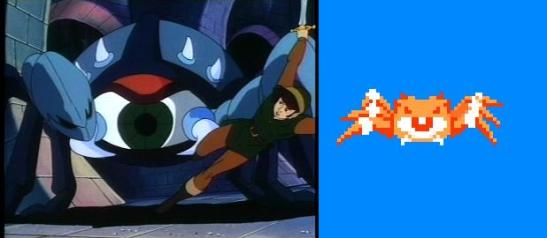
While the animated series didn’t quite succeed in replicating the look of Link and Zelda from the original Nintendo manuals, it did do a rather adequate job in creating a sense of scale for many of the game’s huge variety of monsters.
In the games, the majority of pixelated enemies weren’t much larger than Link, which made it difficult to determine just how big or small a creature was relative to our hero. In the animated series, this was made much clearer, as evidenced by the examples below.

Moblins, which served as the most common mooks, are humanoid in build but actually shorter in stature compared to Link. This could be in reference to their name (Mutt+Goblin=Moblin?), and while it does contrast the way Zelda II’s manual artwork depicts them (in which they’re nearly as tall as buildings), the cartoon’s depiction is actually more believable in this case.

By contrast, the Octoroks are far bigger than one would imagine, as typically squids are the the undersea animal we tend to visualize coming in jumbo size. The Octoroks are so massive, Link can barely hold on to one during a lasso-tied chase sequence.
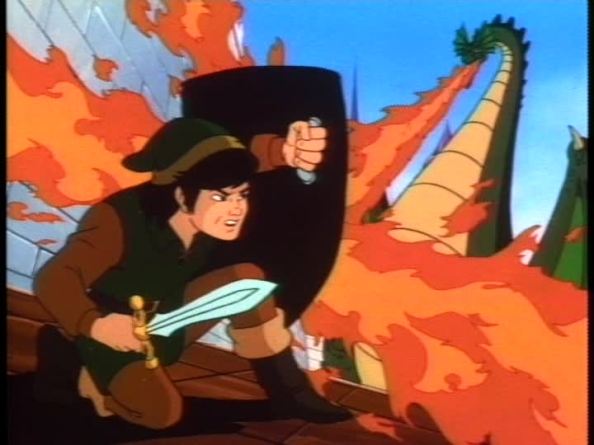
Not so surprising are the dragons (including Gleeock, who appears in a couple of episodes), as any kid would typically imagine them to be the biggest creatures of all. Still, it was a real treat to see these classic bosses handled appropriately, and while many of the monsters served as comic relief, they were certainly given better treatment than the two main characters.
3. Ganon
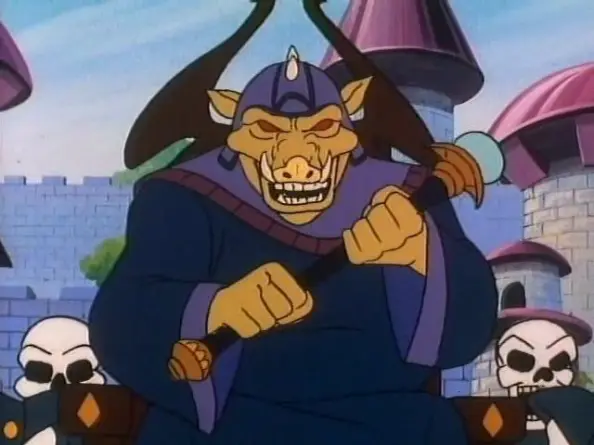
It’s hard to imagine these days, with Nintendo’s sinister revamp of Ganon circa Ocarina of Time and onward, but for a time the animated version of Ganon was effective in quite a few (though not all) levels.
First, and most notably, is that for many young gamers it was the first time we were given an image to go along with the villain. During my elementary years, virtually no one had beaten the original Legend of Zelda…those who were skilled enough to finish it (along with its sequel) were considered a legend in their own right.
Nintendo seemed aware of this as well, keeping Ganon’s identity a secret in most of its promotional material, save for an obscured image of his back leg in order to indicate his towering size over the diminutive Link.
Imagine my surprise when Ganon’s appearance was prominently unveiled during the show’s intro. It’s doubtful anyone pictured him as an inhuman pig/warthog/ManBearPig draped in wizardly robes. For some, this revelation may have been disappointing, but I found it unique and imaginative, destroying earlier expectations on what an evil wizard would look like.
It wasn’t just his appearance that was visually enticing; in the first episode alone, Ganon demonstrates a number of unique powers and villainous quirks, including teleportation, conjuration and corruption (in one instance, he creates a cute little bird out of thin air, then squishes it and reforms it into a bat), and soulless eyes that mirror everything and everyone that meets his dark gaze.
As a character, Ganon isn’t quite as annoying as Link and Zelda, but he is prone to silly moments (shadowboxing in order to show his henchmen the proper way to fight Link) and unclear motivations (he either wants to kill Zelda, hold her hostage for the Triforce, or marry her). Despite this, he was still a bit more brutal than your average 80’s cartoon villain….within seconds of his first appearance, he actually kills a few of his henchmen for failing to obtain the Triforce of Wisdom. His raspy voice also added to his character, making him sound like a decrepit male witch (just don’t call him a Witcher).
4. The Hottest Zelda Ever
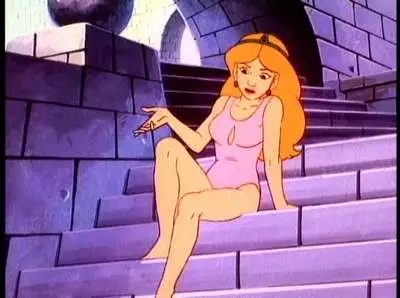
The titular princess of the series (and one who has forever caused an identity crisis with its main hero and the common populace) was the very definition of prim and proper…about the closest thing Nintendo had to a Disney Princess (Princess Peach, in retrospect, is more of the Minnie Mouse/Olive Oil variety).
By comparison, the animated version of Zelda is far more titillating, rocking the skintight pants long before Princess Garnet in Final Fantasy IX. When she’s not acting the typical 80’s cartoon female role by constantly bitching at Link, she exudes a level of flirting that just barely skirts the “all ages’ line (the bipolar rate in which she wants to smack Link for his lewdness or jump into his arms also speaks volumes of the depiction of cartoon women). Small wonder Link is so determined to get that kiss (which, as the video below proves, seems to have about the same kind of meaning as Peach giving Mario a “cake”).
Your mileage may vary on whether this counts as a positive or not, but for young boys growing up in the 80’s, the animated version of Zelda stood alongside the likes of April O’ Neil, Lady Jaye, and Jessica Rabbit for kick-starting puberty, assuming you weren’t savvy enough to get your friend’s older brother to smuggle a PlayBoy magazine. The different ways that she is put in distress (including various nightgowns and swimsuits, being constantly ensnared by horror-movie inspired monsters like octopi and swamp creatures, has a catfight with her evil, more flirtatious doppelganger, and even wrapped up by spiders in one episode, just moments after nearly having a very PG picnic with Link) no doubt sparked a fetish or two that festered itself for years until the arrival of the Internet.
And if you’re the type who shakes their head over getting attracted to animated characters, at least it’s disturbing than ogling Smurfette, Gadget or…um…this.
5. How the World of Hyrule Works
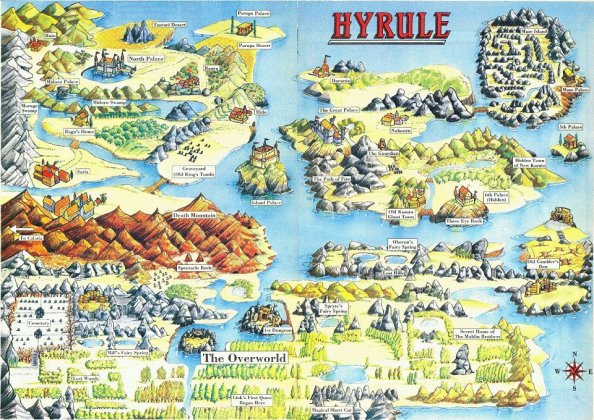
As mentioned before, the Zelda cartoon was created during a time when the series was still building its foundations, having only two 8-bit games under its belt. Just like with the monsters, the series offered a more detailed view into the world of Hyrule, both from a scale standpoint as well as a social one.
We were given an explanation on the existence of the game’s underworld dungeons, the purpose of fairies and their contribution to human society, and even a mention of other kingdoms. Even Zelda’s father is prominently featured despite almost never getting any mention in the games…though considering what a buffoon he is in the series, that may have been for the best.
Regardless, it helped make the world of Zelda seem bigger than it was at the time; other games have largely added to the setting (even outright changing it with each game), but it served its purpose at the time.
6. Link’s Item Bag
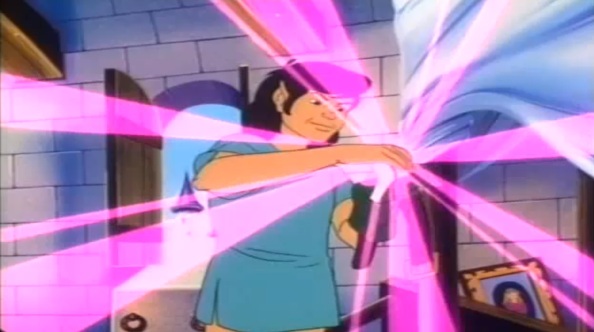
This is a small one, but for anyone who wondered how Link managed to lug around all the items and weapons he found during his adventures, the cartoon offered a very simple explanation: a magic bag that shrunk everything down.
Sure, it raised further questions (like how he knew what tiny item he was reaching for each time he used it, or if he could fit an actual person in there), but considering Nintendo’s own explanation at the time:
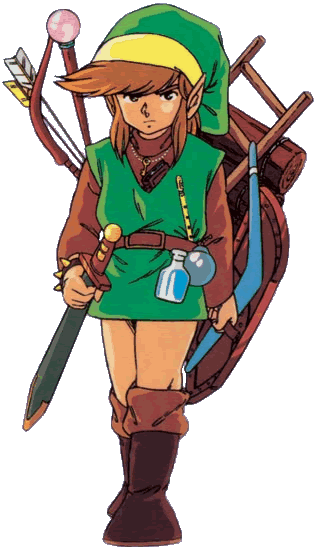
I’d say the magic bag is much less silly.
7. The Comic Adaption

Though having an even briefer existence then the animated series, the Zelda adaption from Valiant comics followed the premise of the cartoon but also offered significant improvements. The biggest improvement by far was changing Link’s appearance to more closely match his official Nintendo look. Consequently, this also caused a bit of a clash with Zelda (who retained her look from the cartoon while also matching the more serious art style), but it was still a refreshing redesign. While the two characters still retained much of their personalities from the cartoon, the stories were decidedly darker and featured many of the monsters (and even NPCs) from Zelda II.
Interestingly enough, the Ganon in this version keeps his face hidden for most of the series, as if trying to reclaim the mystery of his appearance from the original games. Only one issue features Ganon unmasked, which also happened to be the best story by far.
In this issue, Link manages to take the Triforce of Power back from Ganon, but finds himself overcome by its power, as Ganon once was. This story actually establishes how Ganon’s pig-like appearance was a result of his greed for the Triforce, a fact that didn’t officially become canon until Link to the Past.
Whether or not Nintendo got the idea from this story is irrelevant, as it’s still an interesting premise that puts Link in a never-before seen position; there’s something incredibly cool watching all of Ganon’s minions immediately taking orders from their new master, and the climax of the story offers a touching moment between Link and Zelda, for those that actually cared about their long-teased relationship. Speaking of which…
8. The Romance Between Link and Zelda
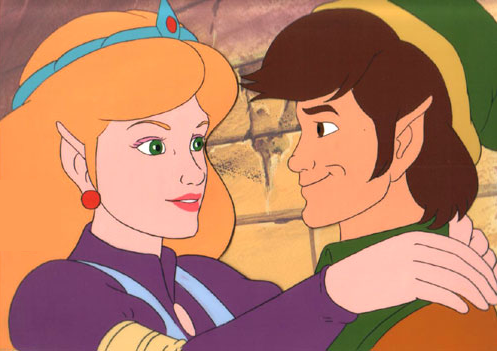
While the frantic bickering between Link and Zelda was arguably the worst thing about the show, the series still deserves credit for featuring one of the first depictions of a romance between the two iconic characters.
While longtime fans have typically accepted the two characters as romantically involved, the truth of the matter is that very few games in the series ever depict them in such a manner. The original Zelda merely ended with the two holding the Triforce triumphantly while the credits rolled, while Zelda II featured a much clearer ending as the two share a kiss underneath the rolling curtain (but considering how that game was even harder than the original, how many kids ever witnessed that ending?).
As desperate as Link was to earn that “kiss” and as reluctant as Zelda was to offer it, the two did share more than a few genuinely touching moments, clearly possessing a deep love for one another that is (sadly) never fully realized during the series’ short run. Regardless, it still deserves some credit for the effort, which is more than can be said for many Zelda titles released even today.
9. The Best Captain N Episode Ever
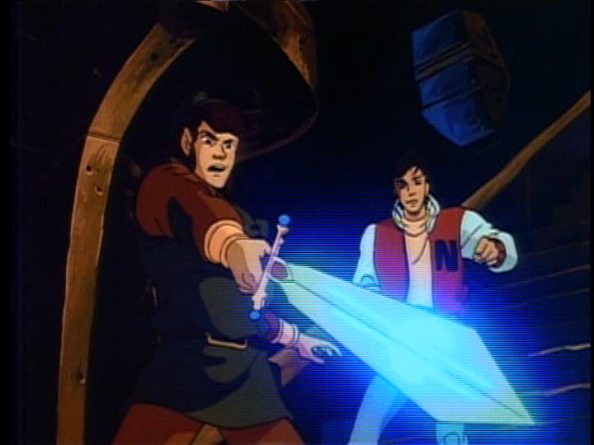
As divisive as people were about the original Zelda series, few deny that the “Potion of Power” episode of Captain N was awesome. There was just something magical about witnessing Captain N and Link shake hands for the first time, followed by Kevin’s insightful comment about how Link was “a real legend” where he came from. The only cartoon crossover that could have topped this was a team-up of Kevin, Link, and Mario, though sadly such a crossover never occurred in all three seasons of Captain N.
What made this episode work especially was that it was both a crossover and a sequel of sorts to the original Zelda series. Basing its story around Zelda II, Ganon has been vanquished, while the land of Hyrule has fallen into disarray by the increasingly violent hordes of monsters determined to resurrect their fallen master. Link also appears older and more mature, having neither his cocky nature nor his constant desires for Zelda. Zelda meanwhile also appears to be a more responsible ruler (which apparently means an upgrade to midriff-bearing clothes, yowza) who even gives Link his long-overdue kiss….in the cheek. Considering how he accepts said kiss with dignity, the two must have certainly grown closer with their feelings.
It’s a great episode that plays into the strengths of both series (which is saying much considering their respective flaws), and it culminates with one final appearance by the biggest, meanest version of Ganon yet. It’s an enjoyable episode to watch even today.
10. The Catchiest Catchphrase Ever
What began as an irritating one-liner shoved down our young throats soon exploded into one of the most beloved Internet memes ever. Link’s infamous response to Zelda’s chastising is quoted by almost everyone these days….even other videogames have paid homage to it. Ironically, it’s also the one line you would never hope to read in an actual Zelda game.
Say what you will about the animated series, but there’s no debating that the “Well excuuuse me, Princess!” line remains its greatest achievement, as important to gamers as Z-targeting in Ocarina of Time.
Monster images taken from Hande’s Blog.
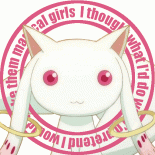
Pingback: Five Reasons A Link To The Past Is The Best Zelda Ever « Blame The Lag
Great article. And insightfully 100% spot-on. Let’s face it, cartoon (& Captain N) Link are a target for ridicule for the current generation, but in fairness you had to be there to truly appreciate it. For original “Zelda” fans who watched it live (Mostly in our late 30’s now), it was campy but special. I am still amazed to this day at the quality of care & attention that was paid to both the music & romantic element. Call me crazy, but I found Link’s character more charming than horn dog. But that’s just my own opinion. And yeah, pretty obvious Link/Zelda’s feeings for one another had progressed significantly in the Captain N eps. You didn’t even mention the “Having a Ball”, episode, penned by one of the original series writers, in which the animated body language of the pair speaks volumes (Especially Zelda’s rather seductive “nighty night” kiss of Link). Strange to have seen this in a children’s cartoon, but silly or not, it serves as “delightful” confirmation to fans of the show that these two wound up with each other.
The magical bag is the best point there. Infact nowdays Zelda games are using that too.
Link and Zelda were pretty offchar, yes, but more realistic as teenagers. And the catchphrase was perfect. Zelda was quite a bitch, in the good and in the bad way, and she deserved that all the times.
I would not be surprised, nor really displeased, if the proncess Zelda of the next game will start as a bitch as well and only progressively she will become a wise girl, and in the meanwhile Link has to say that catchphrase at least one time.
As for the background music, yeah! It was great of a TV show using the same themes of the game it was inspured too. But I cannot say the same things about the sound effects, taken directly from the 8-bit game. While as a kid I thought it was cool, now I find it between silly and disturbing.
Wow. What a random place to find my Zelda Cartoon Censored video. Great article, though, I’m one of those people who live the Zelda cartoon. Still have the DVD.